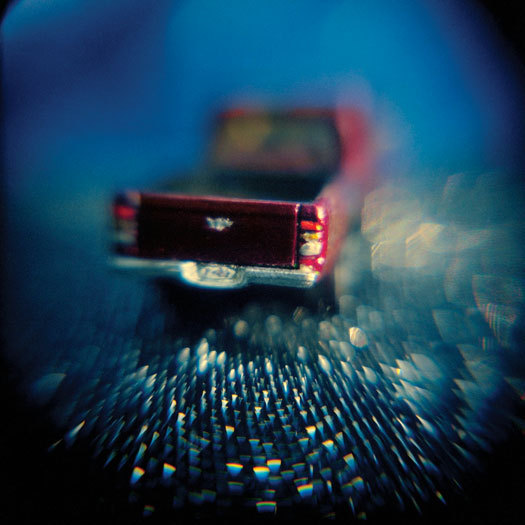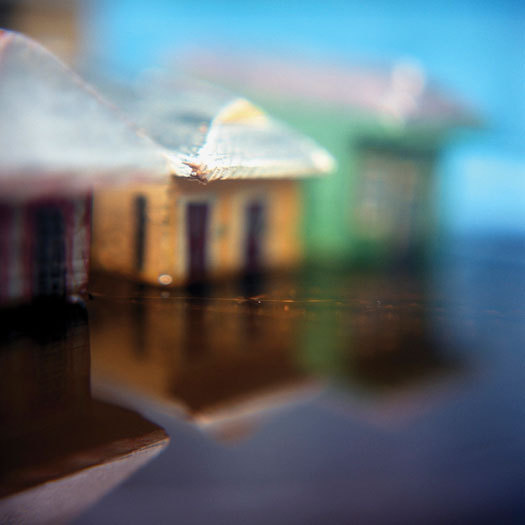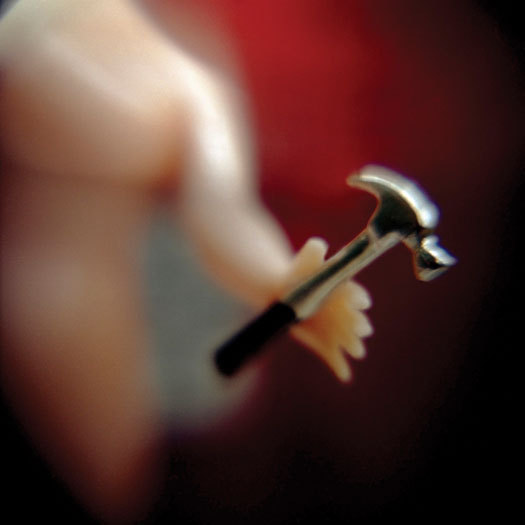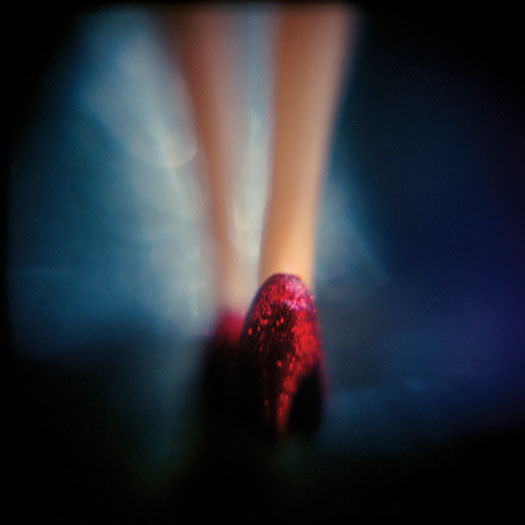Any city worth living in strikes a balance between order and chaos. I guess any life worth living strikes that balance too. In late August of 2005, Jennifer Shaw’s city, and I can only assume her life, tilted too far in one direction. The remarkable series of 46 images collected in Hurricane Story tells the tale, and does so in a way that sets the balance right again.

"We left in the dark of night," from Huricane Story, by Jennifer Shaw.
From the first photograph, “We left in the dark of night,” the viewer senses something about this journey is not quite right: a toy truck, in dreamy color, headed who-knows-where. Shaw and her husband, Cesar Sousa, drove out of New Orleans in the pre-dawn hours, just ahead of Hurricane Katrina. Shaw was due to give birth in less than a week. Maybe this is how the world appeared to them? A vivid yet murky sequence, a prettily impressionistic series of environments that seem more like a place to wake up from than to inhabit.
If my memory is accurate, the American public did not immediately grasp what the rising water in New Orleans really meant. Hurricane Katrina had skirted the city and everything seemed, according to the TV set, to be in order. But those who knew the city also knew that rising water meant the engineering system that was supposed to keep the place from filling like a bowl had evidently failed. This inspired instant, visceral fears of a worst-case scenario: Some unprecedented form of chaos would arrive soon, and stay awhile.
My wife Ellen Susan and I had left New Orleans two years earlier; to Jen and Cesar we’d given some house plants and a guitar. Now from a distance, our efforts to check in on friends grew panicked. It was a few days before Ellen found these two, after a fashion, by way of an online article from an Alabama newspaper about the New Orleans couple who had fled Katrina and somehow found a midwife to deliver their child. A heartwarming and remarkable local-interest item, it was of course not the climax of a story, but the beginning of one. Months and miles would go by before this new family could come home from the road -- or know if home would be the right word for whatever New Orleans became.

"The next morning we turned on the TV," from Huricane Story, by Jennifer Shaw.
The tenth photograph in this book is titled “The next morning we turned on the T.V.,” and the image -- toy-like houses, their warm red, yellow and green exteriors darkly reflected in water risen to the windows – remains among my favorites in the series. I suspect that anybody anywhere who cares about New Orleans had a moment when what had happened, what was still happening, really sunk in. This image of the houses captures that for me.
Disasters are supposed to be fast and furious – like a hurricane. The excruciating thing about the flooding and its aftermath was that it unfolded slowly and then came to a dead stop: It was just there, day after day, no improvement, only a methodical drip of bad news and worse. That Shaw manages to evoke that time, but with a sense of beauty and grace rather than stark misery, is evidence that she did something magical here.
If my summary in words so far fails to match what she communicates in her images, this is the spot where all that follows can only be told the way Shaw tells it, so I’ll write no more of the actual story of Hurricane Story.
Another image is titled “The chaos was hard to fathom,” and I think that feeling was widespread: For a while, the rumors were all facts and the facts were all rumors. When the waters receded, artists in every medium occupied, or became preoccupied with, New Orleans. Great works were created (not that anybody wouldn’t happily trade them all for this never having happened), but I don’t care to think of this one in quite that context. The story is also so personal. It struck me immediately as completely different from Shaw’s own prior work, in a way I found startling. I never asked about her choices, because it all seemed just right: The colors, the tone, the impression of being in some world other than this one, which she essentially was. I never asked if she had considered a more “realistic” documentary approach, because these unreal tableaus of toys and tiny things arranged in uncertain light seemed so fearlessly right. Maybe it all simply extended from that curious totem, the plastic King Cake baby. Or maybe it was something else.

"Violent fantasies ensued," from Huricane Story, by Jennifer Shaw.
Few cities have answered the riddle of balancing chaos and order with the panache and insanity of New Orleans. Carnival stands as the most obvious example: An elaborate mosaic of traditions and rituals, hierarchical societies and strictures formal and otherwise, precariously yet seamlessly organized to make space for anarchic disregard of self-control or social mores. It’s perfect. But it’s just an example. No other place I know so values the idea of ordering itself in a manner that accommodates chaos. That is for better and sometimes for worse, but accepting it (embracing it, really) is one of New Orleans’ paradoxical rules. Lose all you know: This way.
The chaos that followed Katrina made anyone who cared feel like a small thing arranged into involuntary scenarios devised by unseen forces. Here, the artist arranges things, and in doing so restores wonderful order to her story, and her city’s. The viewer can and really must fill in most of the blanks, reconcile the facts and rumors. The journey is emotional, a roller coaster, a flight, an exile, a series of tentative steps into undefined spaces. Visually it’s the opposite of a traditional attempt to document an authentic reality, and that is precisely why it is so effective. Hurricane Story converts the chaos of life into the form of order that we call art. The final image affirms the new family found home right where it was sought. Glittering high heels stride into who-knows-where, and you want to stand up and cheer. Find all you seek: This way.

"Anointed in glitter, we reclaimed the streets," from Huricane Story, by Jennifer Shaw.


Comments [1]
07.02.11
08:29